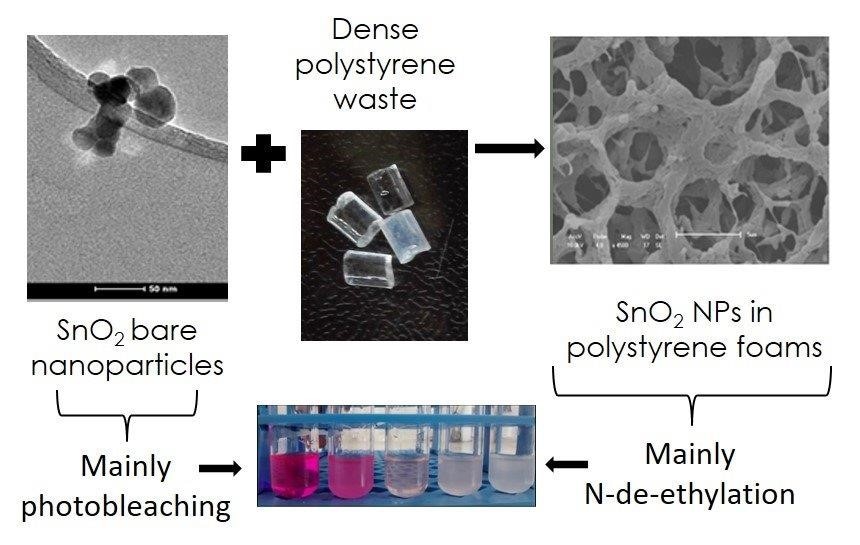Mar 9 2018
University of Bristol researchers have discovered a method to re-use a common plastic to break down destructive dyes found in wastewater.
 Image credit: University of Bristol
Image credit: University of Bristol
The research paper published in ACS Applied Materials and Interfaces by a joint UK and Brazilian research team describes how artificial dyes, used in the clothing industry globally, could be treated by the plastic found in cutlery and packaging– polystyrene.
A smart new material is created from polystyrene by the novel technique of freezing and expanding to a state where it can sustain nanoparticles. In a solid state, it can then be used to eliminate destructive synthetic dyes, which are recognized as carcinogenic and act as chronic reproductive toxins in animals and humans.
University of Bristol School of Chemistry Professor Julian Eastoe worked on the project together with Professor Rodrigo J de Oliveira from Paraba State University, Brazil. Professor Eastoe commented:
“With the recently released BBC series ‘Blue Planet II’ highlighting the scale of plastic debris (so-called “white pollution”) in the oceans, developing processes to break down, recycle or re-use waste plastics is of critical importance.”
“This research suggests a promising approach to turn some of the vast amounts of plastic white pollution into a resource for tackling environmental damage elsewhere in the form of water materials for treatment.”
“There is a wide range of toxic and hazardous substances, including synthetic dyes, which are continuously being released into industrial wastewaters, mostly due to lack of effective treatment methods. Recent studies have demonstrated that these pollutant dyes are responsible for serious damage to aquatic ecological systems: the development of methods of removing these compounds from industrial effluents is becoming increasingly important.”
“Our study both looks at the reuse of plastic to make a new material and the use of this material to tackle water pollution from dyes. This breakthrough will be of interest to water companies worldwide and the next stage will be to see how it might clean-up other pollutants.”
Contaminants, for instance, dyes can be broken down by active oxidation processes (AOP), which mostly involve a heterogeneous (solid-state) photocatalyst so as to convert pollutants into less destructive end products, such as carbon dioxide and water.
In this recent study, waste plastic (poly(styrene)) is re-used to form a porous solid, by freezing it in a solution with cyclohexane as a solvent having a freezing point of +6 °C. Once the solvent is taken away, the material left behind is an expanded solid plastic poly(styrene) foam. This high-surface area support material can subsequently be coated with photocatalytic nanoparticles, forming a solid-state photocatalyst that can be added into contaminated wastewater samples to break down dyes such as Rhodamine B. This dye is banned in food production but is extensively used in sewage treatment plants to detect leaks.